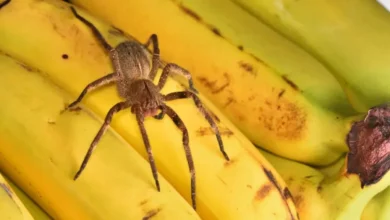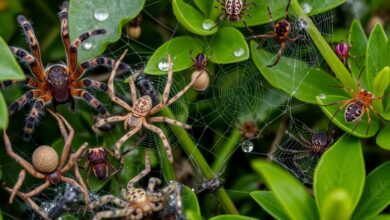Hobo Spiders: Facts and Tips for Your Home
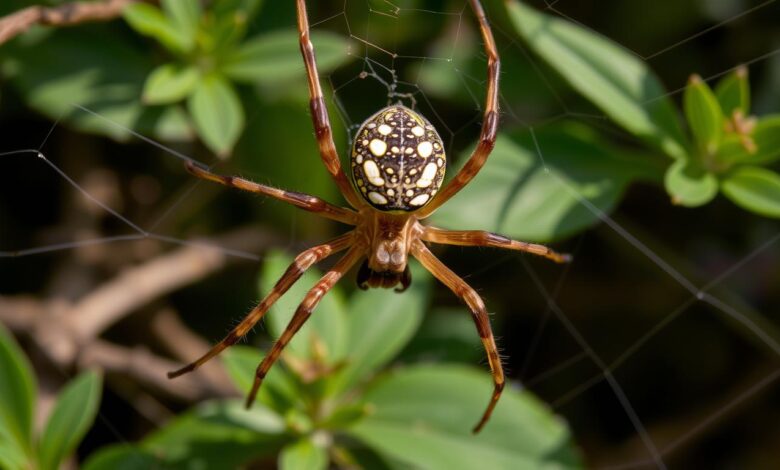
As a homeowner, you might have seen spiders around your place. The hobo spider is one of the most misunderstood. They are found in the western United States and are often mistaken for dangerous spiders. This leads to myths about their venom and bites.
In this article, we’ll give you the facts about hobo spiders. We’ll cover their physical traits, where they live, and how they behave. We’ll also talk about common worries and share tips to keep them away.
If you’re worried about hobo spider bites or just want to keep them out, this guide is for you. It will help you understand these spiders better and make smart choices about dealing with them.
What Are Hobo Spiders?
Hobo spiders, known scientifically as Eratigena agrestis, are medium-sized spiders. They belong to the funnel web spider family. These spiders are usually 6-20 mm long and have a tan or brown color with dark brown bands on their legs.
They are often mistaken for the more dangerous funnel web spiders. But, hobo spiders are less bulky and have less sharp fangs.
Physical Appearance and Identification
Hobo spiders have a unique look that helps identify them. They have a tan or brown body with a herringbone-like pattern on their abdomen. Their legs have dark brown stripes.
Compared to funnel web spiders, hobo spiders are less robust. They also have less sharp fangs, making them less threatening to humans.
Natural Habitats and Behavior
- Hobo spiders are found in the western United States. They like dry, rocky places like fields, woodpiles, and old buildings.
- They build funnel-shaped webs and are not usually aggressive towards humans. They only become aggressive if threatened.
- Hobo spiders often make their homes near human homes. Their young are born in fall and hatch in spring.
Even though hobo spiders may look scary, they are not a big threat to humans. Their bites rarely cause serious symptoms. They usually try to avoid humans.
Knowing how hobo spiders look and behave helps homeowners deal with any infestations safely and effectively.
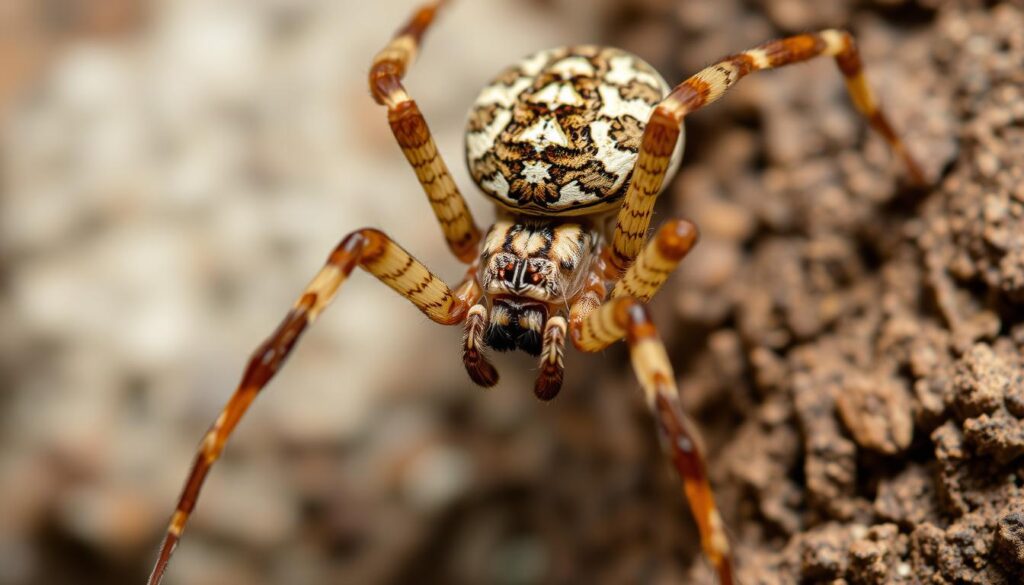
Spiders Hobo: Dispelling the Myths
Hobo spiders have been misunderstood for a long time. Many think they are very venomous and their bites can harm humans. But, studies have shown that hobo spider venom is not toxic, and their bites are not dangerous.
Another myth is that hobo spiders are aggressive and attack people. But, they are actually shy and try to stay away from humans. They only bite when they feel threatened or trapped. It’s important to clear up these myths to help people understand hobo spiders better.
- Hobo spider venom is not considered highly toxic to humans, contrary to popular belief.
- Hobo spiders are not known to be aggressive and will only bite in self-defense when threatened.
- Many of the perceived dangers associated with hobo spiders have been disproven by scientific research.
Learning the truth about hobo spiders can help us appreciate them more. By clearing up myths, we can reduce fears and see these creatures in a new light.
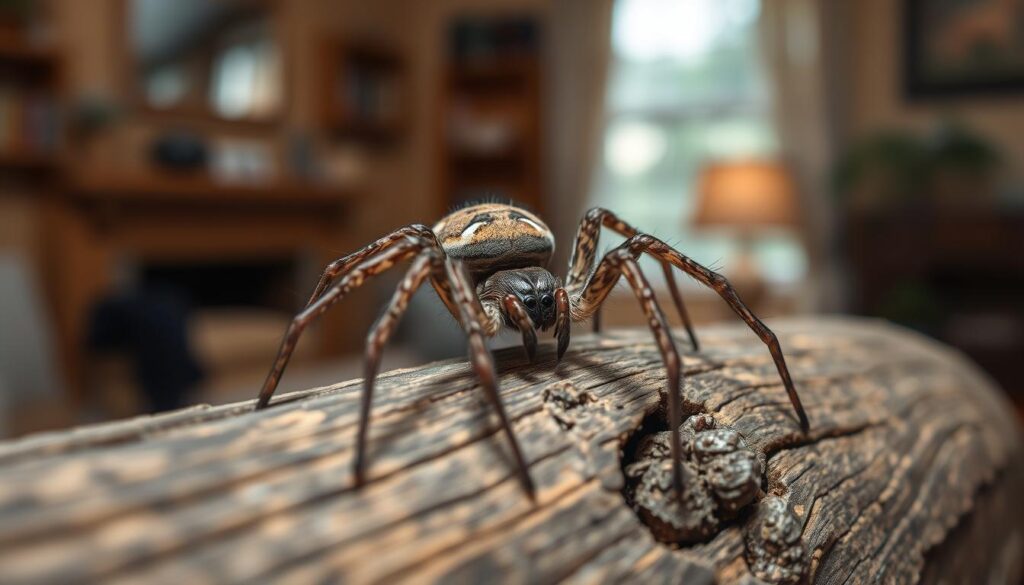
Signs of a Hobo Spider Infestation
It’s crucial to watch for signs of hobo spider infestations in your home. These spiders can be a bother and might even be harmful to your health. Look for their unique funnel-shaped webs in dark, quiet spots like basements, crawl spaces, or behind furniture.
 Discover Why Spiders Cute: Your New Fuzzy Friends
Discover Why Spiders Cute: Your New Fuzzy Friends
Where to Look for Hobo Spiders
Hobo spiders like to hide in small cracks and crevices. So, check these areas carefully. Also, finding dead insects or spider skins near webs can mean there are hobo spiders around. Spotting and dealing with a hobo spider problem early can stop it from getting worse.
Some important places to search for hobo spider infestations in your home are:
- Basements and crawl spaces
- Behind and under furniture
- In dark corners and cracks
- Near window frames and door frames
- Around pipes and utility access points
By being alert and checking these hobo spider locations often, you can catch any problems early. This way, you can keep your home safe and spider-free.
Are Hobo Spider Bites Dangerous?
Hobo spider bites are not usually dangerous to humans. Their venom is not strong enough to cause serious harm. Symptoms of a hobo spider bite might include mild pain, redness, and swelling. These symptoms usually go away in a few hours.
Hobo Spider Bite Symptoms
Some people might have a mild allergic reaction. This can lead to more serious symptoms like nausea, dizziness, or trouble breathing. But these severe reactions are rare. Most hobo spider bites only cause minor discomfort.
First Aid for Hobo Spider Bites
- Clean the wound with soap and water.
- Apply a cold compress to the bite area to reduce swelling and pain.
- Monitor the area for any signs of an adverse reaction, such as worsening symptoms or the development of additional symptoms.
If symptoms don’t get better or get worse, see a doctor. While hobo spider bites are usually not a big deal, it’s wise to be cautious with any spider bite.
Hobo Spider Control and Prevention
Many homeowners in Boise and Nampa, Idaho, worry about hobo spiders. These spiders are not as dangerous as some say, but they’re still unwanted. Luckily, there are good ways to keep your home spider-free.
Natural Repellents and Home Remedies
Think about using natural hobo spider repellents and home remedies before using harsh chemicals. Here are some good options:
- Essential oils like peppermint, tea tree, or citronella oil. Apply these oils around entry points and other areas where hobo spiders may be present.
- Vinegar. Wiping down surfaces with undiluted white vinegar can help repel hobo spiders.
- Chestnuts. Placing whole chestnuts in corners and crevices can help drive hobo spiders away.
- Citrus peels. The strong scent of citrus can also act as a natural hobo spider deterrent.
These hobo spider home remedies are cheap, simple, and better for the environment. They’re great for hobo spider control.
Keeping your home clean and organized also helps. Remove clutter, seal cracks, and get rid of hiding spots. This makes your home less appealing to hobo spiders.
Using natural hobo spider repellents, home remedies, and prevention tips can keep hobo spiders out of your Boise or Nampa home.
Comparing Hobo Spiders to Other Species
It’s important to know how to tell different spiders apart. Hobo spiders are often mixed up with funnel web spiders, which are found in Australia. Both make funnel-shaped webs, but they are not the same.
Funnel Web Spiders vs. Hobo Spiders
Funnel web spiders are bigger and have sharper fangs. Hobo spiders are smaller and look less scary. Funnel web spiders have very toxic venom and are aggressive. They can be dangerous to humans.
Hobo spider venom is not as strong, and they only bite when they feel threatened. Knowing the difference helps you deal with spiders safely at home.
Knowing how to identify spiders is key to a safe home. Learning about hobo spiders and other common spiders helps you handle spider problems. This way, you can keep your home and family safe.
 Poisonous Spiders: What You Need to Know
Poisonous Spiders: What You Need to Know
When to Call a Professional Exterminator
While DIY methods and natural repellents can help manage hobo spider infestations, sometimes you need a pro. This is true if the problem is big, the spiders are in tricky spots, or you’re not comfortable dealing with them yourself.
Professional hobo spider exterminators have the right tools and know-how to get rid of these pests safely. They can also give you advice on how to keep your home spider-free for good.
- Look for signs of a severe hobo spider infestation, such as numerous webs in hard-to-reach areas or an abundance of spiders in your living spaces.
- Consider calling a professional spider removal expert if you’re unable or unwilling to handle the removal process yourself.
- Professional exterminators can use specialized techniques and products to target and eradicate hobo spider populations effectively.
If you’re worried about hobo spiders in your home, don’t hesitate to get help from a hobo spider exterminator. With their expertise and the right treatments, your home will be spider-free for a long time.
Fascinating Hobo Spider Facts
Hobo spiders may not be the most charismatic arachnids, but they have some amazing traits. They are excellent climbers, able to scale smooth surfaces and even glass with ease. Their sensory abilities are also impressive, with sensitive leg hairs that help them detect vibrations and movements.
One of the most fascinating things about hobo spiders is their ability to spin intricate funnel-shaped webs. These webs are used for hunting and as shelters. Despite their bad reputation, hobo spiders are important in their ecosystems, helping control insect populations and serving as food for other predators.
Exploring hobo spider facts, these spiders are very adaptable. They can thrive in many habitats, from natural environments to human-made structures. Their climbing skills let them reach places that seem out of reach, making them common in homes and buildings.
When it comes to hobo spider traits, they are also very agile. They can move quickly and react fast to threats. Their ability to sense vibrations and movements helps them hunt and avoid predators.
- Exceptional climbers, able to scale smooth surfaces and glass
- Possess sensitive leg hairs that detect vibrations and movements
- Spin intricate funnel-shaped webs for hunting and shelter
- Play a crucial role in their ecosystems, controlling insect populations
- Highly adaptable, thriving in a variety of habitats
- Agile and reactive, with quick movements and keen senses
By learning about the unique hobo spider information and traits, we can better appreciate these misunderstood creatures. They play a vital role in the natural world.
Hobo Spider Removal Tips
If you’ve found a hobo spider in your home, act fast and safely. Hobo spiders can be a nuisance. They can be removed with a few easy steps.
Safe and Effective Removal Methods
Start by checking the areas where you found the spiders. Look for webs and where they might hide. Use a vacuum with a hose to pick up spiders and their eggs. This way, you catch them without hurting them.
Or, you can catch them by hand using a jar. Then, release them outside. This method keeps your home spider-free without using chemicals.
If the problem is big, you might need to use insecticide sprays or baits. But, always follow the instructions and avoid touching the chemicals. Keep your family and pets safe.
To stop hobo spiders from coming back, fix any cracks or clutter. Sealing holes and keeping your home tidy helps. Good ventilation also keeps them away.
By using these safe methods, you can get rid of hobo spiders. This makes your home safe and comfortable for your family.
Creating a Spider-Proof Home
To keep hobo spiders out, start by preventing them from getting into your home. Homeowners can take steps to make their homes spider-proof. First, seal any cracks or openings in your home’s exterior. These spots are easy entry points for hobo spiders and other spiders.
Black Widow Spider (Latrodectus): Bite, Symptoms, and FactsAlso, remove hiding spots like wood piles or overgrown plants around your property. Keeping your home tidy and well-lit can also help. Use screens on windows and doors and caulk to seal gaps. This makes your home more spider-proof.
By being proactive in hobo spider prevention and home pest control, you can lower the risk of an infestation. This keeps your family safe from hobo spider bites. Remember, a bit of prevention can go a long way in keeping your home spider-free.

